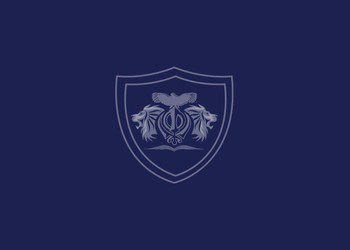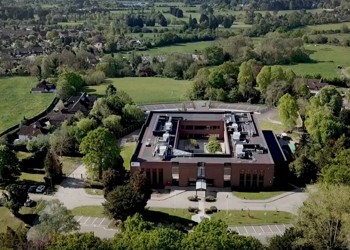
- Home
- Atam Secondary
- Safeguarding
- Sexting
Sexting
Sexting – “Youth Produced Sexual Imagery” - Advice
There is no single definition of ‘sexting’. Many professionals consider sexting to be ‘sending or posting sexually suggestive images, including nude or semi-nude photographs, via mobiles or over the Internet.’
It is an offence to possess, distribute, show and make indecent images of someone under 18. Indecency is not defined but for most purposes, if imagery contains a naked young person, a topless girl, and/or displays genitals or sex acts, including masturbation, then it will be considered indecent. Indecent images may also include overtly sexual images of young people in their underwear.
The law was devised to protect children from adults and not to criminalise children. However, children who take or share sexual images of themselves or others are breaking the law. Creating and sharing imagery can be very risky but can be the result of natural curiosity and exploration. Young people often need educating, support and safeguarding rather than criminalisation.
Schools may respond to incidents without referring to the police. If the police are involved, they can record the outcome of the investigation as “Outcome 21”. This means that even though a young person has broken the law and the police could provide evidence that they have done so, the police can record that they chose not to take further action as it was not in the public interest.
Dealing with incidents
- The image must not be copied or stored on another device; it should not be viewed without good reason (see below)
- The incident should be referred to the Designated Safeguarding Lead as soon as possible to decide:
- Whether there is an immediate risk to a young person or young people.
- If a referral should be made to the police and/or children’s social care.
An immediate referral to police and/or children’s social care should be made if at this initial stage:
- The incident involves an adult or there is a significant age difference
- The imagery involves sexual acts and any pupil in the imagery is under 13
- There is reason to believe that a young person has been coerced, blackmailed or groomed, or if there are concerns about their capacity to consent (for example, owing to special educational needs)
- What you know about the imagery suggests the content depicts sexual acts which are unusual for the young person’s developmental stage, or are violent
- There is reason to believe a young person is at immediate risk of harm owing to the sharing of the imagery, for example, the young person is presenting as suicidal or self-harming
Any incidents with aggravating factors, for example, a young person sharing someone else’s imagery without consent and with malicious intent, should generally be referred to police and/or children’s social care. The school will also take into account whether the child has been involved previously in any such incident.
Deletion of imagery
Students will be informed that possession of youth produced sexual imagery is illegal and that they must delete images. They will be informed that if they refuse or it is later discovered they did not delete the images they are committing a criminal offence and the police may become involved.
Informing Parents/Carers
Parents/carers will be informed at an early stage unless informing them will put the student at risk. A decision not to inform parents will usually be taken with social care and or the police. Parents/carers will be offered advice, although this advice will vary according to the way in which their child has been involved.
- All parents or carers whose child has been involved in any incidents will be:
- Given support to deal with their own feelings of upset and concern.
- Kept updated about any actions that have been taken or any support that their child is accessing.
- Advised on the law around youth produced sexual imagery with regard to saving, sharing, or looking at naked or sexual images of children.
- Informed about sources of support for their child, in case they are feeling anxious or depressed about what has happened. This could include speaking to a ChildLine counsellor or a GP.
- Provided with information on where they are able to access support themselves if they are concerned or distressed.
- Directed to NCA-CEOP if they are concerned about child sexual exploitation or grooming.
Parents or carers whose child has lost control of a sexual image will be:
- Directed to encourage the young person to delete images from social media accounts, if they have uploaded them themselves.
- Directed to ChildLine’s partnership with the Internet Watch Foundation to see if it is possible to get the image removed if it has been shared more widely. This must be done as soon as possible in order to minimise the number of people that have seen the picture.
Parents/carers will also be informed about how to report sexual images on individual sites to get them taken down. If the image has been shared via a mobile, they will be informed that they can contact the mobile phone operator in order to get their child’s mobile number changed.
- Directed to services for Harmful Sexual Behaviour, such as the National Clinical Assessment and Treatment Service24 (020 7428 1500 or NCATS@nspcc.org.uk, an NSPCC service), if appropriate, or if similar incidents have previously occurred.
Parents or carers whose child has been sent a sexual image will be:
- Provided with suggested ways that their child could speak to the sender in order to stop future correspondences. Alternatively, if the young person prefers, informed about how to block the sender.
- Directed to NCA-CEOP if the images were shared by an adult, if their child is being contacted by adults and they are concerned about sexual exploitation or grooming
Reporting to the police
When it is considered that the police need to be involved, issues will be referred to the School’s Police.
The School notes that when a report is made to the police they are not able to offer general advice on incidents. If the children involved are named or specifics are provided they are duty-bound to record and investigate all criminal activity reported.

